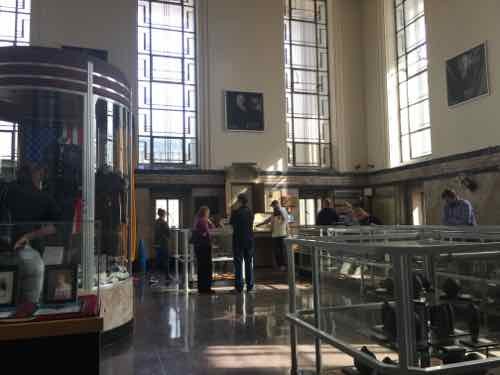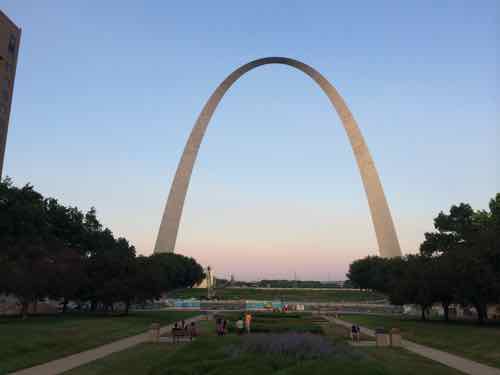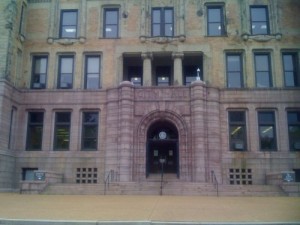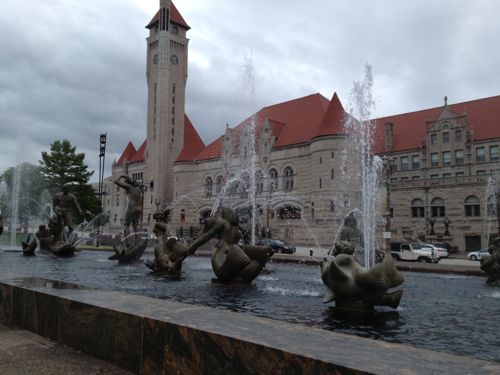Soldiers Memorial Opened Memorial Day 1938, Will Reopen November 3, 2018
A century ago World War 1 was ongoing in Europe, having begin in 1914. This coming Fall marks 100 years since the beginning of the end of the war to end all wars.
November 3, 1918 – Mutiny strikes the German Navy at the ports of Kiel and Wilhelmshaven as sailors refuse orders to put to sea to engage in a final colossal battle with the British Navy. Along with this, revolutionary fervor and Bolshevist-style uprisings erupt in German cities including Munich, Stuttgart and Berlin. The extent of the unrest stuns German leaders, and even the Allies, who fear Germany might now succumb to a violent Bolshevist revolution in the manner of Russia. This brings a stark urgency to the armistice negotiations.
November 3, 1918 – The only remaining ally of Germany, Austria-Hungary, signs an armistice with Italy, leaving Germany alone in the war. (Source)
On November 11, 1918 Germany signed the armistice. St. Louis lost many men in the war, so a memorial to them was a given. It didn’t happen quickly.

It would be nearly two decades since the end of the war before the memorial opened.
Soldiers Memorial officially opened on Memorial Day in 1938. The building was designed by St. Louis architecture firm Mauran, Russell & Crowell in a classical style with art deco flourishes. It features four monumental groups of sculptures by artisan Walker Hancock that represent courage, loyalty, sacrifice, and vision. Hancock, a native St. Louisan, served in the US Army in World War II but is perhaps best known for being one of the Monuments Men, the group tasked with protecting and recovering cultural and historical artifacts from wartime damage.
By the end of the 1940s the Court of Honor had been established across the street from Soldiers Memorial. It memorializes the St. Louisans who lost their lives during World War II. (Soldiers Memorial)
Plaques for the Korean & Vietnam wars were later added in the Court of Honor. Both Soldiers Memorial & the Court of Honor have been managed by the City of St. Louis since built, but a few years ago the city struck a deal with the Missouri History Museum to take over operations of Soldiers Memorial and the Court of Honor. On February 28, 2016, my 49th birthday, both closed to undergo a much needed $30 million dollar facelift to correct decades of neglected maintenance and bring them into the 21st century.



I’ve been serving on a disability access panel during the design phases for the site, exhibits, lighting, etc. Access is greatly improved for those of us who use wheelchairs — a second ramp up to the building has been added. The original elevator has been kept, but another was added. The new exhibits have been designed for all to enjoy — including those with vision or hearing loss. I look forward to seeing the finished results, rather than just drawings and renderings.
The reopening is scheduled for 9am on November 3, 2018. You can learn more about the renovation project here.
— Steve Patterson






